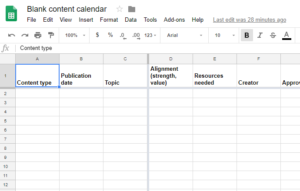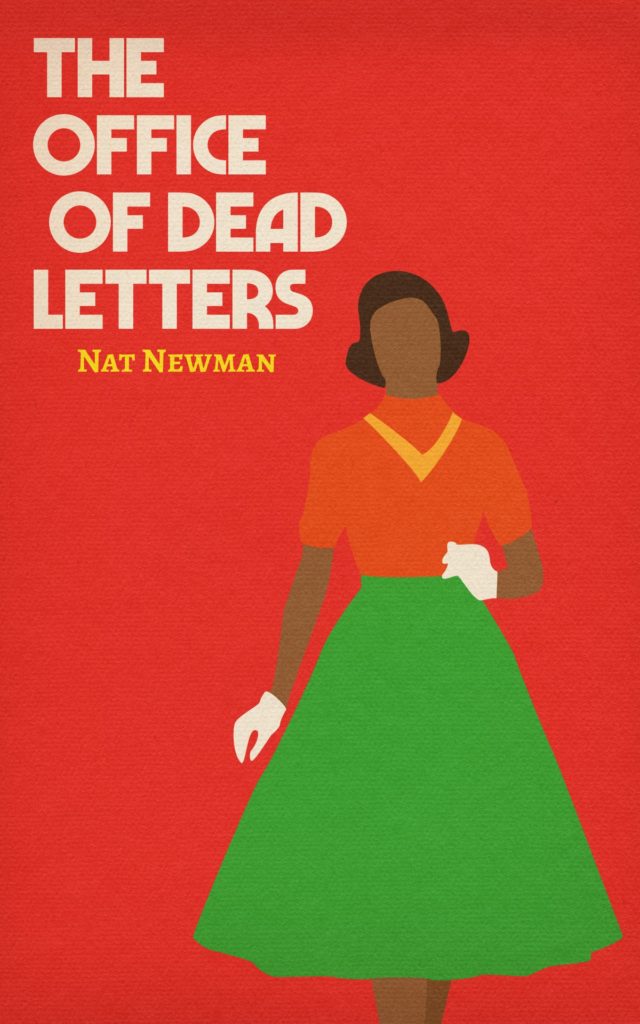When it comes to content writing, the best thing you can do for yourself is to create a content schedule – and then stick to it!
Like everything in life, if you want to get something done, you have to plan, revise, plan. You can try flying by the seat of your pants, but at some point you will either burn out, run out of ideas, feel overwhelmed, and eventually fall behind.
A content schedule is your friend. It will take you by the hand and guide you through periods of writers block. It will give you a little shake and tell you to just get on with it.
Actually, a content schedule is more like your mum – you will kind of resent it most days, but in the end you know that it’s right.
(I’m done with the anthropomorphism now.)
Know thyself
A big mistake that lots of new writers make is to overestimate your ability.
“Yes!” you say. “I’m going to write a blog post every day! And a newsletter twice a week! And tweet five times a day! And…”
Well, you can see where that will end up.
Know yourself. Know your time constraints. Work within those.
If you’re a new business owner looking to put up some content, start small. One post a week is good output if you haven’t done content writing before. If you think you can manage it, you can try for more – especially if you have a few people who will be working together. But even a small start is a good start.
The important thing is to stay regular. Five posts one week and nothing for two months is not a good look. Trust me, I know. With my own website I definitely haven’t practised what I preach. But since putting together a rigorous calendar for myself (just like I use with my clients!), I’ve been much more consistent with my own content.
If your goal is one post a week, choose a specific day to be publication day. If you know that you have to publish on Wednesday, then you can set aside time on Monday for writing and editing, and source a photo on Tuesday. That way, you’ll easily make your deadline.
Using Google Sheets for your content schedule
I’m a big fan of using Google Sheets to create schedules. This makes it super easy for collaboration. Also, no one on your team will have to get used to a new product (like Trello or Asana); most people know how a spreadsheet or a table works.
Even if you’re working alone, Google Sheets is a good idea. You can access it from anywhere in the world – from your computer, a public library, your phone, anywhere.
I’ve created a sample calendar you can use to get started. Obviously, how you arrange your columns is up to you, but at a minimum you need to know what it’s about (topic), when you expect to publish it, who is going to write it, how it will be checked/approved, and why it adds to your brand or your customer experience.
Smart scheduling
Hopefully, you’ve already got a stack of topics that you’re ready to write (see previous post on brainstorming ideas). You’ll need to pop them into the calendar and then decide when you want to publish them.
Ask yourself:
- is this seasonal?
- could it coincide with a particular date or event?
- is it time sensitive?
- do I need to do a lot of research?
- will this be cornerstone content?
Always pick the easy stuff first, and give yourself more time to tackle the research-heavy topics.
If you have something that you really want to shine, something that will showcase you and your business brilliantly – this is known as cornerstone content – make sure you set a reasonable time frame to make it the best you possibly can.
Every week, after you hit publish, check what’s coming up next week. Is it still reasonable? Relevant? Maybe something else came up during the week that would be better? Don’t be afraid to change your schedule around as you go – as long as you stick to the deadline!
Publish, review, update
Once you’ve managed to stick to your calendar for a short time, say 4 weeks, it’s time to review how it went.
- Did you stick to the schedule?
- How easy/hard was it?
- What went right/wrong?
This is also when you want to check the performance of your content.
- Did you get any likes, feedback, comments?
- Did your website traffic increase?
- Which posts were the most popular?
Using this information, you can revise your schedule and your strategy.
It’s all about you
Remember, your content schedule shouldn’t be punishing. As I always say, it has to make sense for you and your business.
If you’re working alone, you’ll be tempted to do everything yourself. That’s great! But don’t be hard on yourself. Set yourself up for greatness by setting a schedule that works with your strengths and your limitations.
And remember, you can always hire a content writer
Happy writing!
xNat.






